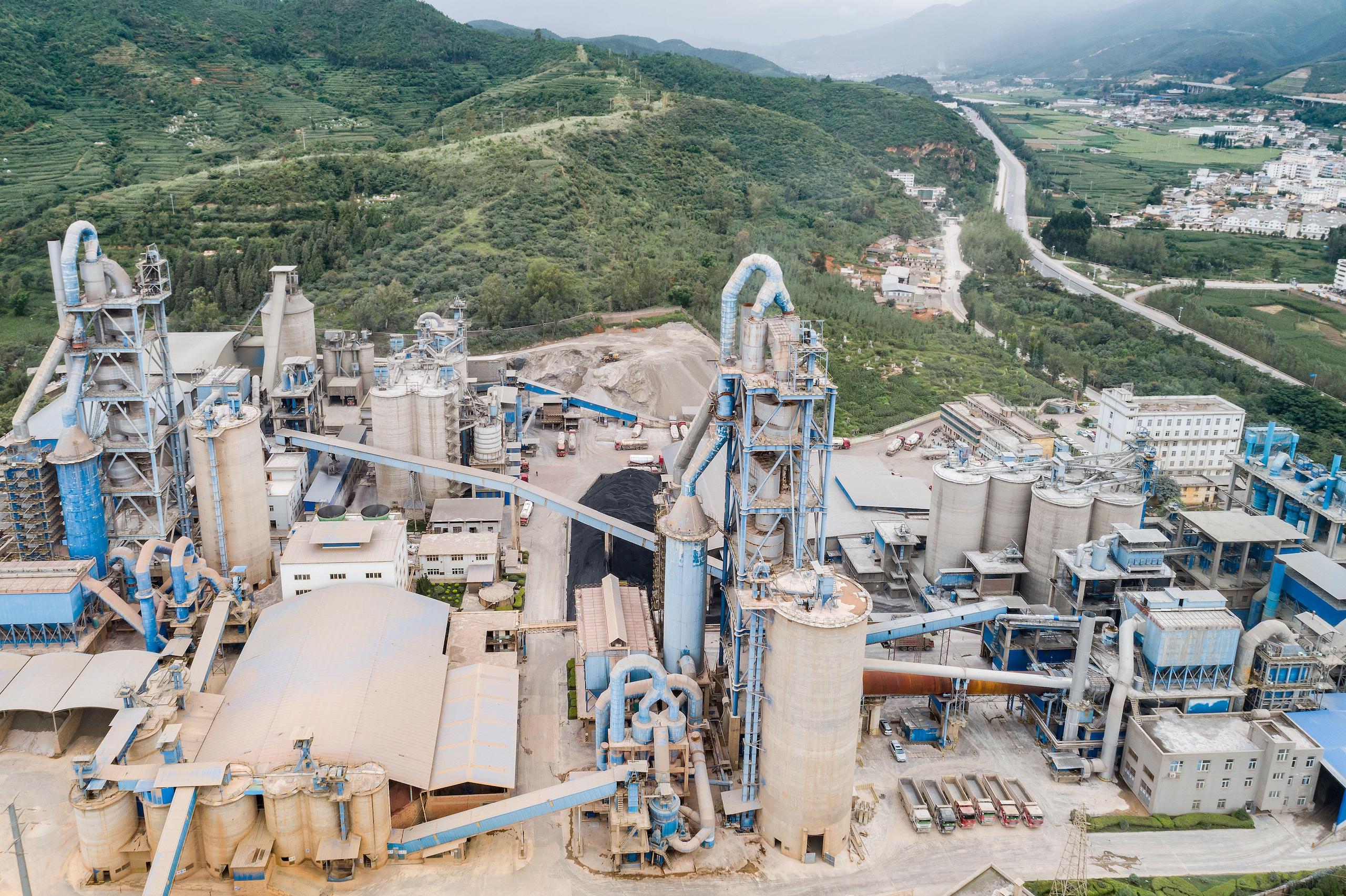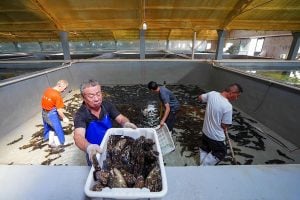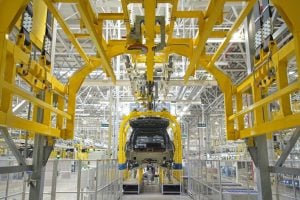China’s mandatory national carbon market launched in 2021 with the primary aim of encouraging companies to pay attention to their emissions. So far, only companies with large coal-fired power generation have needed to comply. But other sectors, such as steelmaking, are set to join soon. This is likely to be a very good thing for the market, and for China’s low-carbon transition.
The market has been running for three years, covering two compliance periods (for emissions in 2019-2020 and in 2021-2022). In July, Xia Yingxian, head of the Ministry of Ecology and Environment’s Department of Climate Change, said work was effectively complete on rules for the sectors to be included in the expansion, which would take place as soon as possible.
According to a July report on the national carbon market, the second compliance period saw carbon trades up 47% on the first, with trading volume up 125%. Xia said total carbon-emissions allowances allocated to companies for the second compliance period matched their actual emissions, in line with policy expectations.
The average price of a tonne of carbon across the first period was CNY 42.85 (USD 5.97), and that rose steadily in the following two years. In early 2024, prices started to rise more rapidly, hitting a new high of CNY 100 a tonne in late April. Prices have fallen slightly since then but are still trending upwards compared to the first period. According to data from the Shanghai Environment and Energy Exchange, an average of 3.7 million tonnes of carbon were traded every month in the first half of this year, up 175% on the monthly average for the first period.
What has been driving up volumes and prices? What will the expansion mean for the businesses affected? Can changes in China’s carbon market offset the impact of the EU’s carbon levy?
From burden to boost
Businesses included in the carbon market used to see it as an extra cost. When preparations for the market were being made in 2017, consultations found the additional burden was their main concern, so the plan was made more cautious. Originally, eight sectors were to be covered: electricity, iron and steel, non-ferrous metals, construction materials, fossil fuels, chemicals, paper-making, and aviation. In the end, only the electricity sector was.
That is changing. Various policy pressures have been pushing carbon prices upwards, making carbon no longer a constraint, but a driver.
If the government issues generous emissions allowances for free, there is little pressure on companies to cut emissions, and the carbon price stays low. But if allowances shrink and prices go up, more trading will take place. In 2023, a new method for setting allowances for the electricity industry reduced emission baselines for thermal-power generation – in effect, reducing allowances. The impact was immediate: the second compliance period saw the number of trades go up 19% on the first, with trading volume up 89%.
When the price goes up, carbon allowances become more valuable. If a firm cuts down on its emissions, it avoids the need to buy allowances, saving money. If it cuts down enough, it may even be able to sell its remaining allowances for a profit. Allowances can also be used as security against bank loans, opening up more financing options. If a firm can get more finance, costs are reduced and profits go up. In 2021 and 2022, all the big banks, coming up with innovative green-finance products, authorised this use of carbon allowances.
Moreover, China is rolling out transition finance, steering it towards sectors that will aid the low-carbon transition. National standards for transition finance are still being drafted, but local standards have been issued and markets for it have formed. In 2022, the National Association of Financial Market Institutional Investors launched trials of transition bonds, low-carbon transition bonds, and low-carbon transition-linked bonds. A total of CNY 100 billion (USD 13.99 billion) of bonds were issued. By the end of 2022, China’s central bank’s tools to support emissions reduction had helped financial institutions lend CNY 600 billion to emissions-reducing sectors. That policy will continue until the end of 2024. Policy leadership means more accessible funding for transition work in traditionally emissions-intensive sectors, which prepare them for taking part in the carbon market.
Government guidance issued in March calls for the set up within five years of an “internationally leading” system for providing financing for the green and low-carbon transition. Resources should be directed in a systematic manner towards green and low-carbon areas, it stated.
Given these circumstances, the carbon market is no longer seen as a burden. In fact, businesses are now keen to get on board, allowing for an orderly expansion even during a time of macroeconomic pressure, and creating a synergy with carbon pricing. That is, new entrants cause prices to go up, which attracts more new entrants. A high but reasonable carbon price will encourage businesses to make the low-carbon transition, and is therefore a natural aim for the government.
Internal preparations, external pressures
When the national carbon market opened in July 2021, the hope was that new sectors would continue to join – as one completed integration into the market, another would start the process. The aim was for all eight of the key sectors to be on board by the end of the 14th Five Year Plan period (2021-2025). But a rash of scandals over fake data, along with the macroeconomic pressures of 2023, meant expectations had to change.
With infrastructure construction slowing and the property sector contracting, emissions from aluminium smelting (part of the non-ferrous metals sector) and steelmaking eased off. In 2018, the government had set a redline for aluminium output capacity of 45 million tonnes. Annual growth in capacity has since fallen from 16% to 4% and is expected to trend towards zero. Last year, capacity at larger cement-makers was at its lowest level since 2011, according to a report from the China Cement Association. Experts say emissions from cement-making in China may have already peaked. This makes stricter carbon-intensity limits and smaller allowances more feasible.
Meanwhile, the EU’s carbon levy, known as the Carbon Border Adjustment Mechanism (CBAM), has been in a transitional phase since October 2023, with importers required to report emissions embedded in their goods. From 1 January 2026, those emissions will have to be paid for. Five types of goods the EU imports from China are affected: iron and steel, aluminium, cement, fertiliser and hydrogen. Carbon is also pricier in the EU than in China – the equivalent of CNY 500-600 (USD 70-84) a tonne in late July.
With China expanding its carbon market to cover steel, aluminium, and cement, “carbon leakage” in those sectors will be paid for in China.
Carbon leakage occurs when a country imposes strict emission limits and companies decide to shift their production to another country with laxer rules. As production in the destination country is likely to be more emission intense, carbon leakage can actually increase net global emissions.
As long as China’s carbon management is up to EU standards, no extra CBAM charges will need to be paid on export to Europe. For those firms, China’s carbon market will be a plus rather than a burden, as it will make exports easier.
The policy environment, sectoral trends and preparations for CBAM are all pulling in the same direction, encouraging the expansion of China’s carbon market.
Preparations for that expansion gathered pace this year. March saw the publication of consultation drafts of guides for emissions accounting and verification in the aluminium and cement industries. Those two industries account for 1.8 billion tonnes of emissions a year, or 20% of the national total. In April, a Ministry of Ecology and Environment official said technical work for bringing the steel sector into the carbon market was approaching completion. Then, in July, the ecology and environment minister, Huang Runqiu, said work on bringing the steel, cement, and aluminium industries into the market was to speed up.
Positive impacts and future developments
The upcoming expansion round will boost China’s carbon market not only by increasing confidence and trading, but also by improving the market’s make-up.
The electricity-generating companies that have joined it since 2021 are mostly subsidiaries of China’s five major power conglomerates. These 2,225 companies account for 41% of China’s power-generation capacity. The five conglomerates and two grid companies have all set up subsidiaries or departments to manage carbon assets. Prior to 2017, they had already registered their renewables projects with the China Certified Emission Reductions (CCER) scheme, forming a reserve of carbon assets. Much carbon trading has therefore taken place between companies within the same big conglomerates, reducing activity on the actual carbon market.
China Certified Emission Reductions are government-certified carbon credits pegged to activities to reduce or avoid emissions. Such activities include renewable-power generation, tree planting and waste-to-energy projects. Each credit corresponds to a tonne of CO2 reduced, and can be traded by companies on the national carbon market to help meet their obligations. The CCER scheme relaunched in January 2024 after being suspended in 2017 due to low transaction volume and data quality. It had originally been launched in 2012.
Of the sectors being added to the market, steel is the most concentrated – meaning a few large-scale producers are responsible for the highest proportion of production. While the addition of the cement and aluminium sectors won’t bring as much carbon onto the market as the electricity sector does, it will mean the arrival of lots of smaller state-owned and private companies, significantly reducing the average size of market players. A larger and more diverse market leading to greater liquidity would be excellent news.
Higher carbon prices and more trading will help reflect the environmental benefits of green electricity in prices. A 2024 policy document confirmed that any green electricity used by energy-intensive firms will be exempt from energy restrictions. According to the consultation draft of emissions accounting rules for the cement sector, companies can add to their emissions cuts by using green electricity or buying green-electricity certificates. That motivates companies to buy green electricity, by giving them more space to meet their obligations on the carbon market. These initiatives will both aid the take-up of renewable electricity and reduce overall emissions.
Overall, it doesn’t matter if macroeconomic pressures continue, because if financial policy and the electricity market continue moving in their current directions, the benefits of rising carbon prices will only become more pronounced. By about 2028, when China is setting a timetable for a quantified peak-carbon level, allowances will shrink and provide some support in boosting carbon prices. One paper, titled “Achievements and Prospect of China’s National Carbon Market Construction (2024)”, predicts that by the end of 2030, allowances will be trading at over CNY 200 a tonne on average, with CCER’s rising to CNY 150 a tonne. If ongoing market expansion and financial support continue to play a positive role, even higher prices are possible.









